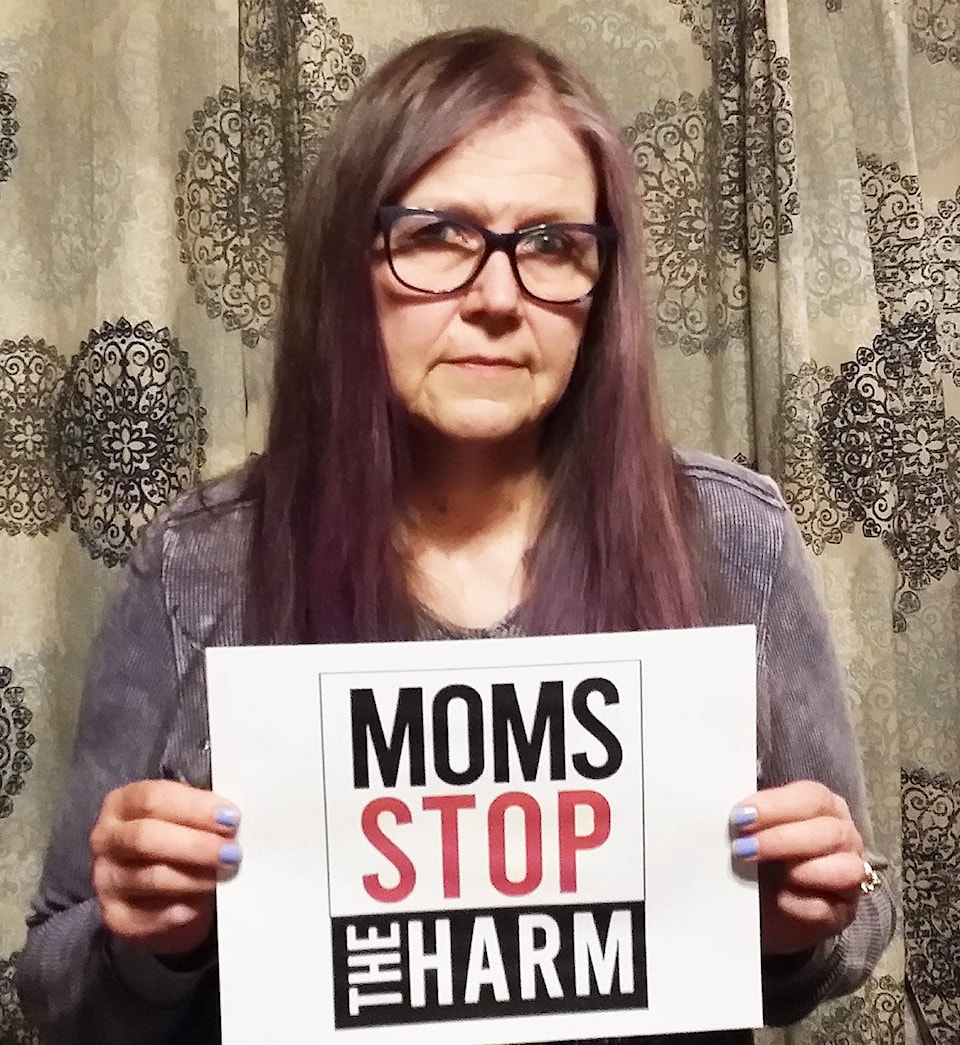When the public thinks of people dying from drug overdoses in the province, they picture needles floating in street puddles, not gainfully employed men dying alone in their homes.
Yet this is what the statistics from BC Coroners Service show. In 2021, 85 per cent of the overdose deaths have occurred indoors, with 56 per cent occurring in private residences. Men accounted for 79 per cent of these deaths.
Kat Wahamaa, regional liaison for Moms Stop the Harm and project co-ordinator for Mission’s overdose Community Action Team, lost her son to an overdose in 2016.
She said the conversations around fatal drug “overdoses” – a term she doesn’t even like – are rife with misconceptions about what’s actually happening.
“They’re being poisoned by toxicity in the illicit supply,” Wahamaa said. “It’s in every kind of socio-economic level … Sometimes, you wouldn’t even know they’re drug users.”
She said the problem is not that people are taking too much, but that criminal elements control the game. The cutting and cross contaminating of the supply (and not just opioids) with drugs like Fentanyl is what is killing people, she said.
While the deaths do occur in marginalized populations living on the streets, they are not representative of who is dying, according to Wahamaa.
Conflating the issue with homelessness misses the scope of the problem, she said, describing how drug use is also prevalent in trades people working long hours.
As of May 31, there have been 851 deaths in B.C., compared to 1,728 in 2020, according to BC Coroners Service. Fraser Health region accounts for 291, and 574 of these deaths, respectively.
Throughout the pandemic, the provincial health authorities deployed an evidence-based approach towards limiting the spread of COVID-19, but Wahamaa said it’s upsetting the same scientific rigour isn’t applied to the overdose crisis.
One response was evidence based, the other is ideology based, she said.
“We know what works,” Wahamaa said, adding the problem is one of “political will.”
“If we have a COVID outbreak, we don’t seek the public’s opinion on how to respond to it. We let the public-health professionals craft the response. And that’s exactly what we need right now.”
She said the solutions have been agreed upon for decades: Overdose prevention sites detached from service providers; health professionals prescribing a safe pharmaceutical-grade drug supply; and a decriminalization policy integrated into the health system.
While Portugal’s decriminalization of all drugs in 2001 is the most famous example, many other jurisdictions have followed suite, Wahamaa said, “Canada doesn’t need to re-invent the wheel.”
And B.C. health professionals have been prescribing users with regulated versions of street drugs, such as Dilaudid, since spring, 2020. The program, Safer Supply, was a direct response to the increasing toxicity as borders closed during COVID.
But more needs to be done, according to Wahamaa. She said little province-wide adoption by health authorities has occurred, prescribers weren’t up to date with the policy, users found it difficult to navigate, and some of the drugs offered did not work as substitutes.
“None of these drugs are unusual. They’re being produced and used (legally), and it’s like, we’ve just made a
demarcation between, this is legal, and this is illegal.”
Substance use is not going anywhere, Wahamaa said, and the arbitrary lines between illegal and legal drugs often have dubious origins.
Opium, she describes, was made illegal over 100 years ago as a racist, anti-immigrant policy to target Asians.
One of the goals of Moms Stop the Harm is get people to understand the evidence of the overdose crisis, before it leads to the death of a family member, Wahamaa said.
“Tough Love is a terrible thing. It’s a terrible thing, I’d feel really sad for parents who bought into that,” she said.
“The antidote is connection, not being stigmatized, and not (hitting) rock bottom … If you’re dead, you can’t recover.”
@portmoodypigeon
patrick.penner@missioncityrecord.com
Like us on Facebook and follow us on Twitter.
This story was included in the Black Press Overdose Prevention Guide, which was created through a partnership with Fraser Health, the University of the Fraser Valley, Fraser House Society, Fraser Valley Health Care Foundation, Mission Community Services, and Pacific Community Resources Society. Hard copies are available at local service agencies, health clinics, and at our newspaper office. Click here to read the e-edition.
RELATED: Black Press Media launches updated Overdose Prevention resource guide
